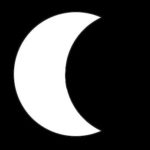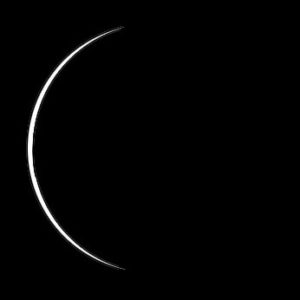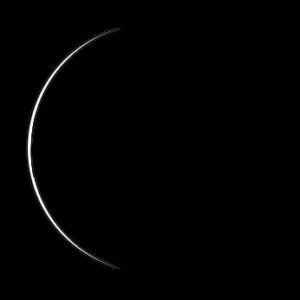Whenever eclipse geeks are talking about their calculations, they always need to make sure they are careful to distinguish as to whether they’re talking about “magnitude” or “obscuration”. In case you’d like to understand this, too, here is a quick explanation.
I’m going to use the word “percentage” below, but if you want to substitute “fraction” or even “amount” (so long as you understand what you mean by that word), that’s OK too:
Obscuration
The percentage of the Sun’s area that is being covered by the Moon at any given moment. Expressed as a number from 0 to 1.
Magnitude
The percentage of the Sun’s diameter that is being covered by the Moon at any given moment. Expressed as a number from 0 to, uh, well, to possibly a number slightly bigger than 1.
Note that these are NOT the same thing – otherwise, there wouldn’t be any argument.
(Well, to be fair, they are the same if we’re not having an eclipse – they would both be 0 in that case! But that’s kind of boring, right?)
Why the difference? Well, look at these two pictures:
 |
 |
|---|---|
| 50% magnitude | 50% obscuration |
You can kind of see that the “bite” the Moon is taking out of the Sun in the picture on the left, comes right to about the center of the Sun’s disk. In the picture on the right, slightly more of the diameter is covered (about 60%, actually), but exactly half the Sun’s area is being covered. So which one do we mean if we want to say that “half” of the Sun is covered? They’re both right, in a way, and that’s why we need two terms.
Which one looks to you like “half” of the Sun is being covered?
What values do we use?
Obscuration has to be equal to 1 if all of the Sun is covered. It can’t get bigger than 1, because you can’t cover more than 100% of the Sun. (Well, actually, if you extend the math to imagine that you could do that, then it makes sense to talk about more than 100% coverage.)
Magnitude during totality is always going to be bigger than 1. I don’t know if it makes any more sense to talk about being able to cover more than 100% of the Sun’s diameter than its area, but that’s what people do. If the magnitude were exactly 1, and the Moon and the Sun were exactly the same apparent size in the sky, then the Moon would only cover the Sun for 0.0000000… seconds, and the total eclipse would be over before you knew it!
And of course, purists would correct me and say that the eclipse in that case would never be total, because there are valleys around the edge of the Moon that would always be letting a little bit of light through. This actually has been seen before, with the most famous case being the 1986 eclipse as viewed and described by Glenn Schneider. We will let his story speak for itself!
Every eclipse has a maximum magnitude that it reaches, both in terms of the spot where the observer happens to be located, and where a person situated in the right spot to see the most coverage would be.
Example: the 2017 eclipse
This eclipse for someone located in Greenville AL only achieved about 90% magnitude:

A nice partial, but honestly, this level of eclipse would not cause anyone to become very excited.
However, for those in Greenvile KY or Greenville SC, the eclipse reached this 90% level, and then continued on toward totality! People there DID experience totality, and were amazed.
So that’s why we say that for Alabama, this eclipse was only going to be so many “% partial” – yet the 2017 eclipse was still rightfully called a “total” eclipse. It was total for some people!
But you had to be in the path!
A couple more things to say about this topic:
Who Cares?
Astronomers do, but for most people who just want to see and appreciate a total eclipse, it’s not really important. If you get nothing else from this discussion, it’s this:
50% magnitude or 50% obscuration: If that’s all you’re going to get for the 2024 eclipse, then you’re not in the path of totality, and you need to move!
And finally, let’s say something about eclipses close to the edge of the path of totality, but not in it. If you aren’t in the path of totality, you may think “Oh well, I’ve got a 99% eclipse”, or even 99.5%. Well, look at this:

99% partial eclipse (magnitude)

99.5% partial eclipse (magnitude)
These look pretty impressive, but that little sliver of Sun that is still showing is VERY bright! At this point of an eclipse, the shadows would look weird and there’d be some noticeable darkening – but if this is the maximum magnitude of the eclipse where you are, then you will not see the dark sky or the corona. You will HAVE to use your eclipse glasses, even when this small amount of Sun is showing. And you will not believe the difference between what you see, and what folks just up the road a couple of miles are going to see.
You will have an interesting experience, to be sure. This day will not be like any other day you’ve experienced (unless you’ve seen totality!). But still, totality is pretty awesome, and it’s why we say…
Get to the path!
